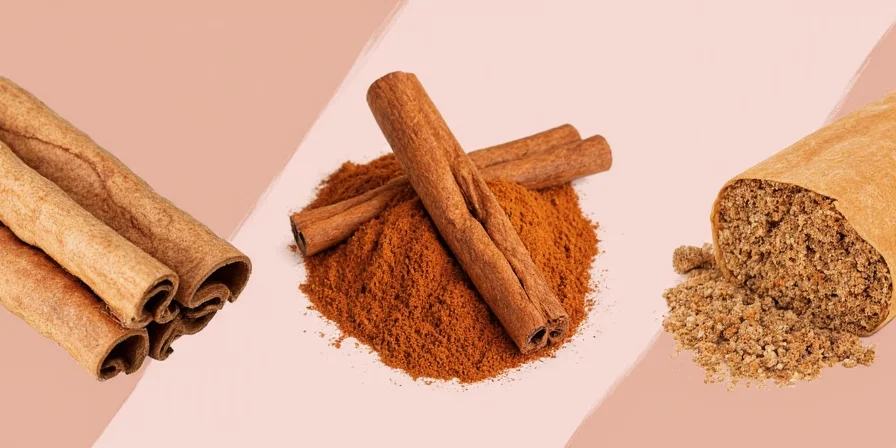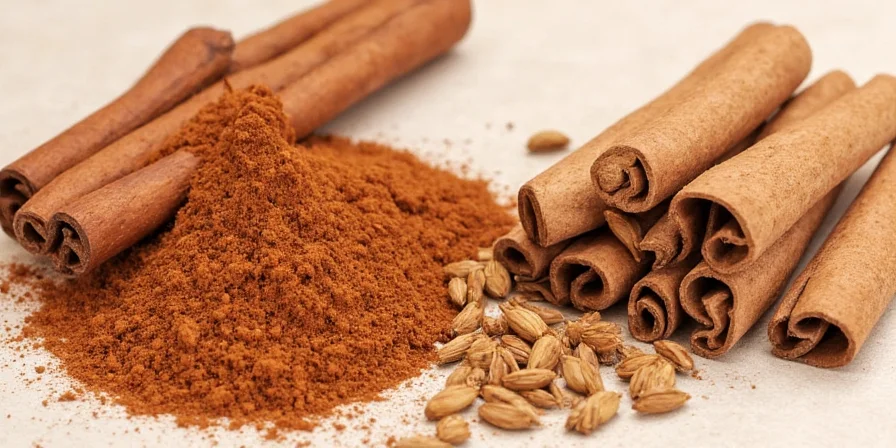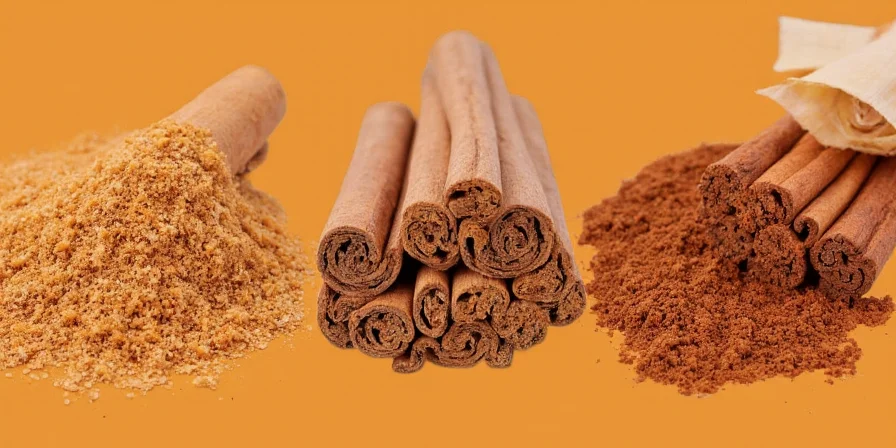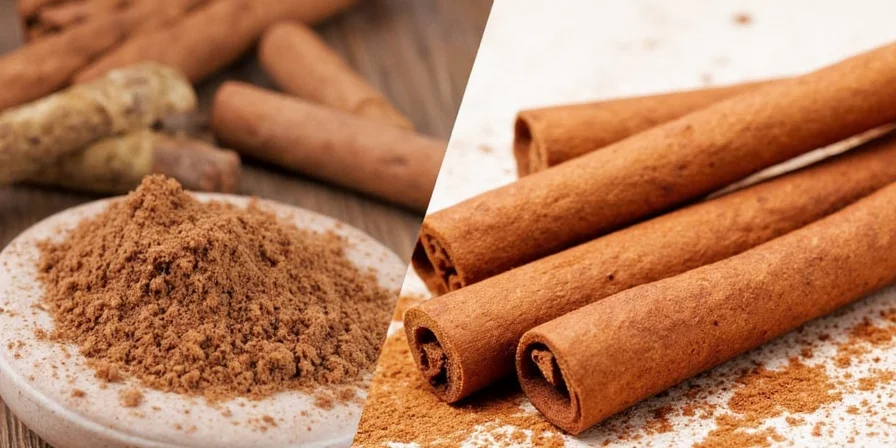
Most cinnamon sold in supermarkets is actually Cassia, containing dangerous levels of coumarin that can cause liver damage with regular consumption. If you use cinnamon daily in coffee, oatmeal, or supplements, you need to know the critical differences between Ceylon ("true" cinnamon) and Cassia to protect your health. This guide reveals exactly how much Cassia is dangerous, how to identify types visually, and which variety you should use based on your consumption frequency.
Immediate Answer to Your Search: Cinnamon Safety Protocol
For daily cinnamon users: Ceylon is the only safe choice. Cassia contains 5-12mg coumarin per teaspoon - exceeding the European Food Safety Authority's safe limit (6mg for 60kg adults) in a single serving. Regular Cassia consumption causes cumulative liver toxicity. Use this quick reference:
- Daily consumption (coffee, smoothies): Ceylon ONLY - Cassia becomes hazardous within weeks
- Weekly baking: Ceylon preferred, Cassia acceptable in small quantities
- Occasional use (holiday recipes): Cassia is generally safe
- Medicinal purposes: Ceylon required - consult healthcare provider
| Feature | Ceylon Cinnamon | Cassia Cinnamon |
|---|---|---|
| Also Known As | "True" Cinnamon | Chinese Cinnamon |
| Coumarin per Teaspoon | 0.005-0.03mg (safe) | 5-12mg (dangerous) |
| Safe Daily Limit | No restriction | ≤1/2 teaspoon maximum |
| Visual Identification | Thin, multi-layered quills; light tan | Thick, single-layer bark; dark reddish-brown |
| Price Comparison | 3-5x more expensive | Affordable, widely available |

Coumarin Exposure: The Hidden Daily Danger
The critical health difference comes down to coumarin content. While both types offer similar flavor benefits, Cassia contains dangerously high coumarin levels - a naturally occurring compound that causes liver toxicity with regular consumption. The European Food Safety Authority sets a tolerable daily intake (TDI) of 0.1mg coumarin per kilogram of body weight. For a 60kg adult, this equals just 6mg daily.
Here's what this means in practical terms:
- A single teaspoon of Cassia contains 5-12mg coumarin - immediately exceeding safe limits
- Daily use in coffee (2 teaspoons) delivers 10-24mg - 4x the safe limit
- Coumarin accumulates over time - liver damage symptoms develop gradually
- Ceylon provides identical flavor without this risk (0.005-0.03mg per teaspoon)
Why Your Grocery Store Sells Dangerous Cinnamon
Cassia dominates 90% of the market due to economic factors, not safety considerations. Cassia trees (Cinnamomum cassia) mature faster in varied climates and yield 5-10x more bark per acre than Ceylon's delicate Cinnamomum verum. This 80% lower production cost makes Cassia the default for commercial products, explaining why "cinnamon" labels rarely specify type. Major brands often mix both types without disclosure, putting health-conscious consumers at risk.

Practical Identification Protocol
When labels don't specify type, use this foolproof identification system:
- Texture Test: Ceylon quills crumble easily between fingers; Cassia remains rigid
- Aroma Assessment: Ceylon offers citrusy sweetness; Cassia has sharp, medicinal notes
- Visual Inspection: Look for multiple thin layers (Ceylon) versus single thick bark (Cassia)
- Dissolution Test: Ceylon dissolves completely in hot liquids; Cassia leaves sediment
Daily Consumption Safety Guidelines
Based on usage frequency, here's your complete safety protocol:
| Usage Scenario | Recommended Type | Maximum Safe Amount | Why This Recommendation |
|---|---|---|---|
| Daily coffee or tea | Ceylon ONLY | Up to 1 tablespoon | Cassia exceeds safe limits in single serving |
| Morning oatmeal | Ceylon preferred | 1 teaspoon Cassia MAX | Cumulative exposure with other sources |
| Baking (cookies, cakes) | Cassia acceptable | 2 teaspoons per recipe | Infrequent consumption reduces risk |
| Medicinal use | Ceylon MANDATORY | Follow healthcare provider guidance | Coumarin interacts with medications |
Proven Substitution Guidelines
Transitioning from Cassia to Ceylon requires minor adjustments:
- Flavor intensity: Use 25% more Ceylon to match Cassia's boldness in robust dishes
- Daily beverages: Ceylon dissolves completely without sediment (ideal for coffee)
- Dense recipes: Cassia still works well in gingerbread where intensity complements molasses
- Delicate dishes: Always choose Ceylon for custards, crème brûlée, and fruit desserts
- Meat applications: Cassia's robust profile suits game meats better than Ceylon

Purchasing Verification System
Avoid counterfeit "Ceylon" products with this 4-step verification:
- Look for "Cinnamomum verum" or "Ceylon" on packaging (not just "true cinnamon")
- Examine quill structure - authentic Ceylon has multiple thin layers
- Check price point - genuine Ceylon costs 3-5x more than Cassia
- Purchase from specialty spice retailers with transparent sourcing
When in doubt, contact the manufacturer directly to verify cinnamon type. Reputable companies will provide botanical names and origin information.












 浙公网安备
33010002000092号
浙公网安备
33010002000092号 浙B2-20120091-4
浙B2-20120091-4